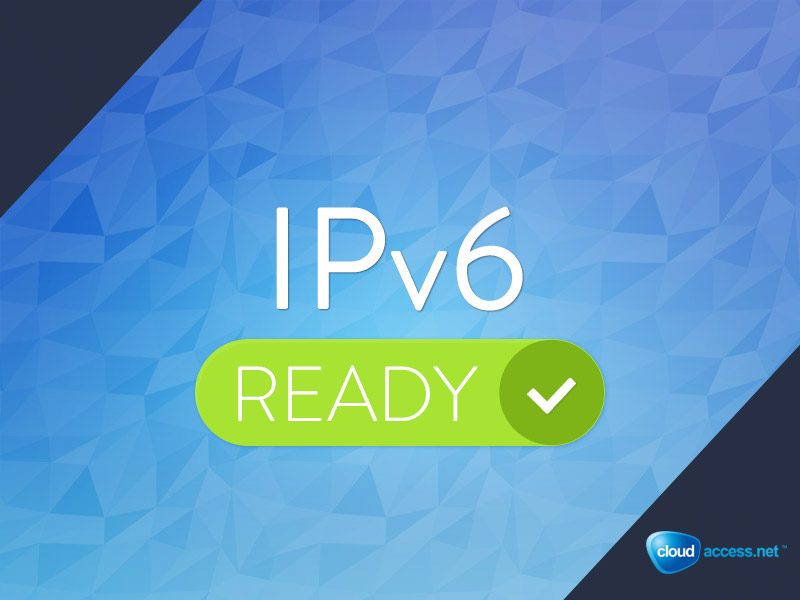Understanding the IPv6 Rollout
Internet Protocol is the set of rules that governs the exchange of information and the way traffic is routed on the web. Internet Protocol Version 6 (IPv6) is the next generation Internet communication protocol that provides an identification and location system for devices, computers and networks and will replace IPv4, the current protocol that has many limitations. This blog shines some light on IPv6 and explains the impact on Internet users and how the CloudAccess.net platform is IPv6 ready.

The Growth of the Internet and the Need for a New Protocol
Originally developed in the 1970s, IPv4 is a cornerstone of the Internet as we know it. It was developed long before anyone could really imagine all of the interconnected devices that we have today. IPv4 allows for approximately 4.3 billion unique IP addresses, which might sound like a lot and certainly was a lot in 1970s standards. Nobody in 1970, however, could have predicted that the Internet would be as popular as it is or that many of us would be walking around with high speed computers in our pockets. With close to 3 billion current Internet users, IPv4 presents some serious limitations.
Essentially, the biggest limitation is that IPv4 is running out of the 32 bit addresses that each computer or device is required to have. An example of a 32 bit IPv4 address:
199.116.78.60
By doing the math you can see why IPv4 doesn’t cut the mustard. There are so many Internet users and devices that IPv4 just doesn’t meet the demand. That’s why the Internet Engineering Task Force (IETF) started work on IPv6 in the 1990s. Under IPv6, address are 128 bits, allowing for 340 trillion, trillion unique IP addresses. An example of a 128 bit IPv6 address:
2607:1b00:1000:a000:0000:0002
Another cool feature of IPv6 is that these long addresses can be shortened. This is called long hand/short hand.
2607:1b00:1000:a000::0002
Because there are so many IPv6 address available (billions of addresses for every person on earth), we won’t run out. Even though the address is longer, it’s actually a less complex way of communication between computers and devices. Temporary solutions to the limitations of IPv4 exist, but IPv6 is the best solution because it promotes simplicity. In the future, every device or computer will have a unique address allowing for improved direct interaction and security.
IPv6 Adoption Rate
The only problem with IPv6 is the slow adoption rate. One of the biggest issues is compatibility - trying to access an IPv6 address from an IPv4 system simply just won’t work. There is no backwards compatibility. This can be corrected by upgrading older hardware and using an updated modern operating system. Most mobile phones and most hosting providers have been IPv6 ready for awhile now, and adopting the new protocol isn’t really a consumer issue. The problem isn’t on our end.
The only thing that is really stopping a faster adoption rate for IPv6 is Internet Service Providers (ISPs). Because upgrading to an IPv6 system is costly and because temporary fixes to IPv4 give ISPs quite a lot of visibility, there isn’t a lot incentive for ISPs to adopt the new protocol in a timely manner. IPv4 carries approximately 96% of the traffic on the Internet, but in just the past 4 years, IPv6 traffic has increased from less than .5% to almost 4% of the Internet traffic. That number will only increase.
CloudAccess.net Readiness
At CloudAccess.net, most sites hosted with us share IPv4 addresses, which is one of the temporary fixes that hosting providers have adopted because of the limitations of IPv4. We were, however, allocated our set of IP numbers from the American Registry of Internet Numbers (ARIN), and each site on our platform is allocated it’s own unique IPv6 address. Long story short: we’re ready for the rollout.
We hope that this blog has been useful and that it helped to shine a little light on an issue that will become more and more prevalent as time goes on. Thank you for choosing CloudAccess.net!

